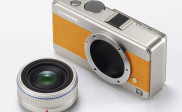How to Give Water a Smooth Silky Look in Photos
A technique that is fun, fascinating and visually pleasing in photography is the silky water technique. It can be used in many different nature settings as long as there is a body of water. It can also be used and adjusted to create different visually pleasing effects.
The silky water technique is quite easy to accomplish if you have the right tools and the right lighting. Overall, to perfect the technique, it requires a steady hold of the camera while at the same time, utilizing a long exposure of your subject. Your subject will be some type of body of water i.e. a river, a sea, a lake, which is in continual motion. These elements combined will create a smooth and soft appearance.
Camera Settings:

Photo by liumax
Shutter Speed: A long exposure is necessary when taking a photo with the silky water technique. The longer the exposure, the more the camera will be able to generate a smooth water surface. On the other hand, if the exposure is too long, the image of the water can potentially lose its form. Also, if the exposure is too short, the effect won’t be achieved at all. Typically, to be able to get the right visual result, it will be left up to your practice and taste in determining the right shutter speed. You may want to start with a shutter speed of 2 seconds and gradually work it up.

Photo by DerekDD
A Tripod: You’ll definitely need access to a tripod. If you don’t at this time, you might try to hold the camera steady with another object or prop it against a rock. Furthermore, if you’re hiking around in the woods, you might think carrying a tripod is out of the question. Fortunately for you, there are several really great lightweight tripods available in different price ranges. If you choose to use a slightly cheaper tripod, remember that the cheaper they are, the less stable they will be. Also, many cheaply priced tripods are not compatible with DSLR cameras. Just be sure to read all the specifications prior to your purchase.

Photo by DerekDD
Lighting and the Sun: It’s applicable to say that normally, a sunny day would be the day to venture out into nature. Unfortunately, if you want to perform the silky water technique, doing it in the sun is near impossible because of the long exposure. When practicing the silky water technique, adjust your settings as so: use the longest exposure possible, while at the same time using the lowest ISO setting. This will usually be around ISO 100, depending on the camera. It’s also important to adjust your aperture. You will want your aperture to be set at the smallest value it can get to (large f/number.) Most lenses can only go down to f/22. If the sun is out, an f/22 setting will not work because too much light will hit the sensor. If this is what you’re experiencing, there are filters you can use to help cut out some of the light. (See below)

Photo by Pettyscams
Filters: When trying to produce the silky water effect, you may find that the sun is too bright for you to leave your shutter open for a good amount of time. Relying on a filter may be the best option. Specifically, using an ND filter, otherwise known as a Neutral Density filter, will filter out some of the light that is going to your sensor. The wonderful thing about ND filters is that they do not change the colors or contrast of your photo. All they do is filter out some of the light so that you can make an awesome silky water photograph. It is important to know that ND filters come in different ratings for how much light they block. Depending on the brightness of the sun, you may want to experiment with a low filter rating, (an ND filter at 0.3, reducing the light by one stop) and gradually progress to larger filter ratings (ND filters at 0.6 and 0.9 which reduce the light by 2 and 3 stops).

Photo by JUSTINTER
Quick Recap:
Use a tripod if convenient, or prop the camera against a rock.
Shutter speed: start at a setting of 2 seconds. Be sure to check that you’re not over exposing the shot.
Keep adjusting the shutter speed to get the result that you want.

Photo by Choni23

Photo by Boreasz




Hi
This is a great article with lots of useful information. I would like to add that weighing down your tripod with your camera bag helps stabilize your camera, use Live View with the mirror locked up and then trip the shutter with a Remote.
Here is an example Laguna Beach, CA: http://t.co/5aqoiTW
Regards, Erik
Kerstenbeck Photographic Art
http://www.kerstenbeck.com